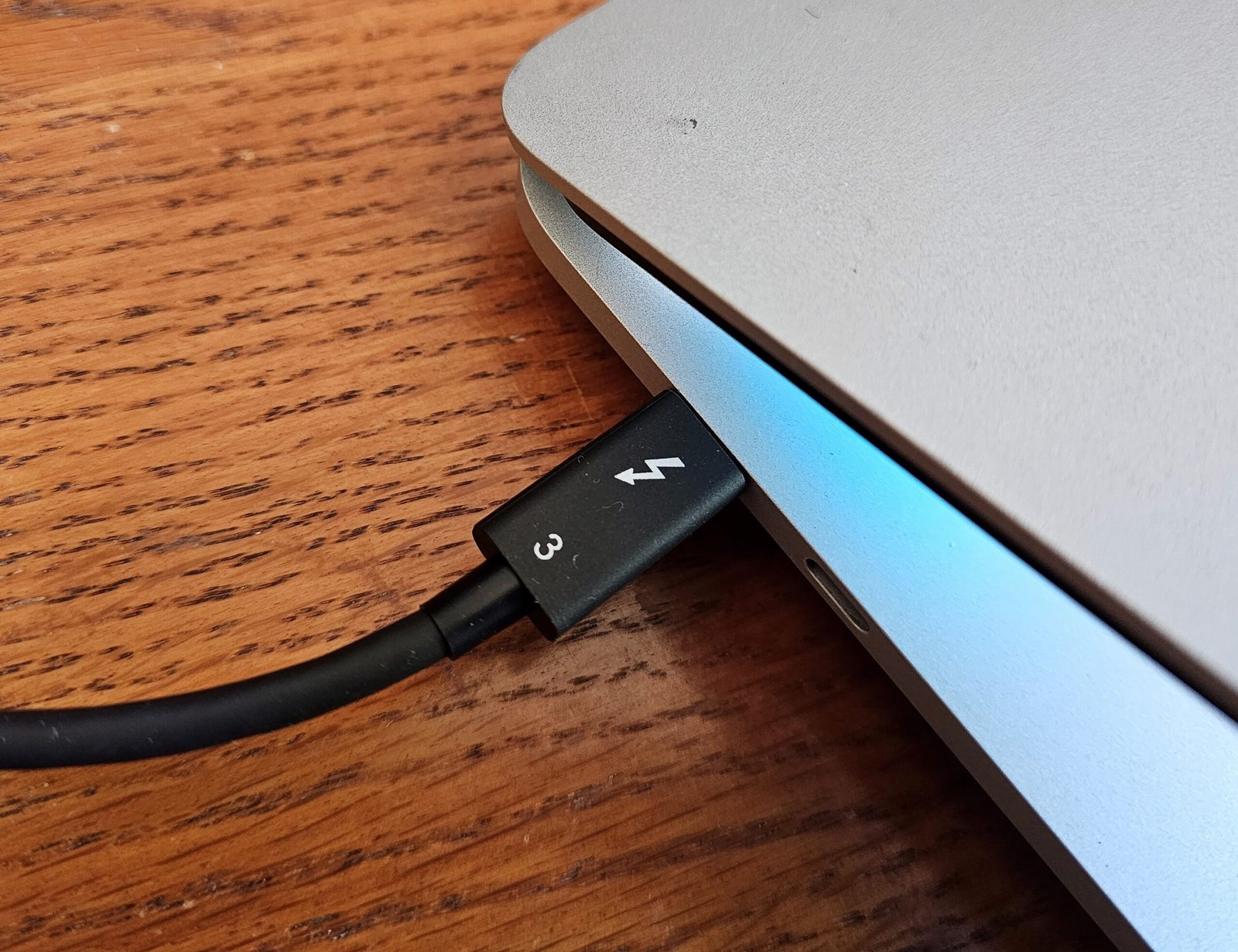I hate to say it, but desktop PCs are behind the times.
This may seem a little strange, but I haven’t used a desktop PC for years (decades?) until recently. Laptops, even an odd Chromebook or two, generally took care of my needs. In the evening, I’d fire up the Xbox or use a gaming laptop. It’s only recently that I’ve jumped back into desktop PC gaming, and my desktop — all desktops, really — lack one important feature:
A Thunderbolt port. Or, a USB4 port, if you prefer.
Thunderbolt or a high-speed USB4 port are now staples on laptops, even some gaming laptops. Most gaming laptops still include a dedicated DisplayPort or HDMI port, primarily because gamers prefer a directly connected, high-speed interface to a high-refresh-rate display. And that’s fine; I get that. Until now, Thunderbolt hasn’t delivered.
Instead, both Thunderbolt 4 and USB4 support two displays running at 60Hz, or an 8K display (try buying one of those!) running at 60Hz, too. PC gamers, however, will turn up their nose until both frame rates and refresh rates hit at least 90Hz. Even then, many gaming displays run at 240Hz or above, although the resolution may still be 1080p or 1440p (2K). Since Thunderbolt 3 and 4 can’t deliver what gamers want, the technology has largely been confined to content-creation PCs.
Cable Matters
But there’s a new standard on the block: Thunderbolt 5, with the next-gen, rival USB4 version 2 waiting in the wings. And that changes the game altogether.
Thunderbolt 5 raises the available bandwidth from 40Gbps to 80Gbps. In certain situations — in what Intel calls Bandwidth Boost — multiple channels can be tied together to enable up to 120Gbps of bandwidth in a single direction. From a display standpoint, Thunderbolt 5 enables massive improvements: three 4K displays running at 144Hz, not 60Hz. Single displays can run up to a whopping 540Hz. (Intel hasn’t clarified whether that display would run at 1080p, but that seems likely.) These are gaming-caliber numbers.
(The USB equivalent, USB4 v2 or sometimes called USB4 symmetric, has its own 80Gbps specification and optional 120Gbps feature. Intel has been more vocal about Thunderbolt 5, but USB4 v2 and Thunderbolt should be direct competitors. Because of Intel’s certification process, USB4 is usually associated with AMD Ryzen chips.)
Now we wait for devices to follow the introduction of the Thunderbolt 5 specification. Intel began shipping its “Barlow Ridge” Thunderbolt 5 chipset earlier this year to laptop and dock manufacturers. As of now, I only know of two laptops that actually use the discrete component, a Razer Blade and a laptop manufactured by Maingear. Only one Thunderbolt 5 dock has crossed my desk, from Kensington.
Willis Lai
Thunderbolt: From laptops to desktops
Is it time to start thinking about adding Thunderbolt 5 ports to a desktop PC? I believe so. Before, Thunderbolt didn’t have as much to offer gamers as it does now.
There’s another angle, too. Most desktop PCs include an I/O panel on the rear with numerous ports, including USB-A, USB-C, DisplayPort, and HDMI. A graphics card usually has its own dedicated display ports as well. Gamers are used to snaking HDMI cables from the rear of their PC, up to their display. But desktops, ironically, have a fundamental problem: a lack of ports anywhere else on the case. If you ever need to connect an SSD or a printer or some other peripheral, it probably means fishing around with a flashlight at the back of the case.
Installing a Thunderbolt port into a desktop PC chassis does a few things: One, there’s the simple USB-C interface, which means that you don’t have to remember whether the HDMI connector is a smiley face or a frownie face, or how the DisplayPort connector aligns. It’s much more conducive to connection-by-feel. If you want to use that Thunderbolt port as a direct display connector, you can. If you want to use that Thunderbolt cable to connect to a separate Thunderbolt dock, you can as well — there’s no need to fish around your case for a spare USB-A port, because it will be right on your desk.
Mark Hachman / IDG
There are two catches right now, as I see it. First, a discrete Thunderbolt 5 component means added cost as well as an extra card slot inside your case, which adds complexity and ups the price tag a bit. Eventually (very soon, we can hope) Intel will integrate Thunderbolt 5 right into the processor/chipset, solving that problem. That hasn’t happened yet.
Second, there’s the cord length. Thunderbolt 5 cables, to my knowledge, can’t stretch more than a meter (3.25 feet), which might be a bit short in some setups, especially if the “desktop” is placed on the ground. An intermediary dock might help solve this, or perhaps a forthcoming active cable. (Apple sells Thunderbolt 4 cables in excess of 9 feet.) These are all issues which can be overcome.
The best Thunderbolt docks do a fantastic job of extending the capabilities of your laptop. But it’s time for desktops to join the club, too. Thunderbolt 5 should be their ticket in.
This articles is written by : Fady Askharoun Samy Askharoun
All Rights Reserved to Amznusa www.amznusa.com
Why Amznusa?
AMZNUSA is a dynamic website that focuses on three primary categories: Technology, e-commerce and cryptocurrency news. It provides users with the latest updates and insights into online retail trends and the rapidly evolving world of digital currencies, helping visitors stay informed about both markets.
